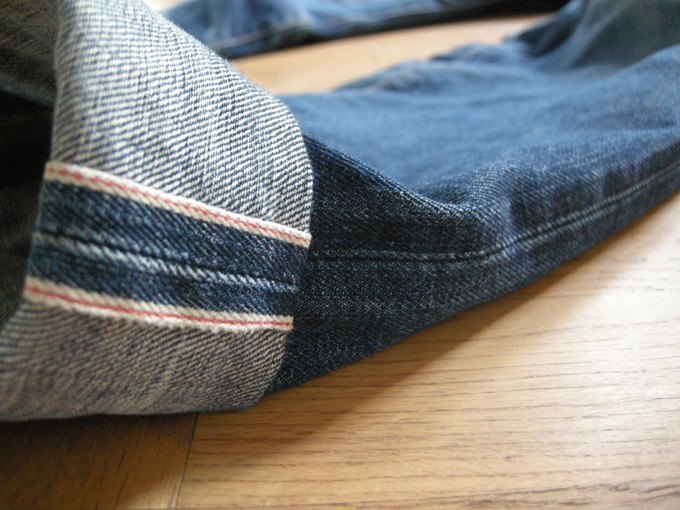Another term you will without a doubt come across when entering the Raw Denim world is Selvedge (aka Selfedge, Selvege) Denim. What’s all the fuss about? Why do denim-addicts and denim-amateurs alike pay extra special attention to it?
Let’s start off the easy way. By definition, it is “the edge of woven fabric finished so as to prevent raveling, often in a narrow tape effect, different from the body of the fabric” (source: dictionary.com).
One distinction that must be made clear as well is that Raw denim ≠ Selvedge denim. Many people confuse the two and think they are essentially the same, however there is a big difference. Raw denim refers to the wash while Selvedge is the edge. I’ve found that most Raw Denim is “selvedge” and not all Selvedge Denim is raw. From a more visual standpoint:
VERSUS
See the difference? Non-selvedge denim’s edges are not crisply finished and thus can easily fray. Whereas with selvedge denim, the edges are nicely bound (hence “self-edge”), diminishing the likelihood of the ends/edges unraveling.
It’s important to bear in mind as well that as Selvedge Denim is becoming more and more popular, it does not always equate to higher quality nor justify a higher tag. You have to be sure to check the other denim characteristics (i.e. raw? sanforized? weight?).
The history behind Selvedge Denim is pretty interesting in itself too, and begins with the old style loom being born in the late 1800′s. It was able to produce tightly woven and heavier denim in strips that were quite narrow but very long.
In fact, the denim was so narrow that in order to maximize use of the denim, the jean manufacturer had to weave fabric all the way to edges, which were consequently bound. The “self-edge” would be done in various colours (red being the most common), a practice fabric mills follow to differentiate between fabrics.
Check out the video in our earlier post on Momotaro Jeans to see this traditional loom in use, or check below.

Traditional Japanese Shuttle Loom
However, in order for the jean manufacturers (e.g. Levi’s, Lee) to keep up with the ever increasing denim demand in the 1950′s, they switched to the projectile loom – a machine which could produce wider denim for less cost – giving the end consumer a cheaper and lower quality pair of jeans.
Stay Raw!



No comments:
Post a Comment